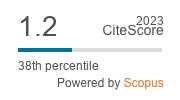Dinámica de infección por Cystoisospora suis (Isospora suis) en una granja piloto ubicada en el estado Carabobo, Venezuela
DOI:
https://doi.org/10.22319/rmcp.v10i1.4487Palabras clave:
Granjas, Porcinos, Protozoario, VenezuelaResumen
La investigación se realizó en Venezuela desde septiembre de 2015 hasta agosto de 2016 con la finalidad de determinar la dinámica de la infección por Cystoisospora suis en una granja piloto. Para la determinación parasitaria se colectaron 480 muestras fecales de camadas, distribuidas en cuatro grupos de edades: grupo 1 (1-7 días de edad, 20 %), grupo 2 (8–14 días, 47 %), grupo 3 (15-21 días, 23 %) y grupo 4 (22-28 días, 10 %). Todas las muestras se cultivaron en dicromato de potasio al 2.5% y posteriormente se procesaron con una técnica de centrifugación-flotación. Los resultados señalan que C. suis se encontró presente durante todo el período de estudio con 52.08 % de prevalencia, y presentando mayor frecuencia en lechones con dos semanas de vida. Posiblemente, las condiciones de manejo y salubridad de la granja favorecen los mecanismos de sobrevivencia y proliferación del parásito. Con respecto al mes de muestreo, no se encontró significancia (P>0.05) entre las constantes meteorológicas y la prevalencia por C. suis, lo que podría indicar que el ambiente no tuvo ningún efecto sobre la presencia del protozoario. Los datos recolectados en la encuesta epidemiológica se analizaron mediante una prueba de correlación de Spearman, y se determinó asociación significativa (P<0.05) entre la prevalencia y la asistencia veterinaria, protocolo de desinfección 3 y empleo de Baycox al 5%. Se concluye que las condiciones meteorológicas registradas son óptimas para que ocurra el proceso de esporulación, y por tanto, para mantener viables ooquistes de C. suis durante todo el año.
Descargas
Citas
Cazorla-Perfetti D. Sobre la nomenclatura taxonómica y sistemática de los Apicomplejos. Rev Peru Med Exp Salud Pública 2017;34(2):351.
Ruggiero M, Gordon D, Orrell T, Bailly N, Bourgoin T, Brusca R. et al. A Higher level classification of all living organisms. PLoS ONE 2015;10(4):e0119248. https://doi.org/10.1371/journal.pone.0119248.
Lindsay D, Dubey J. Coccidia and other protozoa. In: Straw B, et al editors. Diseases of swine. 9th ed. Iowa, USA: Iowa State University Press; 2005:861-873.
Lindsay D, Blagburn B, Dubey J. Coccidia and other protozoa. In: Straw BE, et al editors. Diseases of swine. 8th ed. Iowa, USA: Iowa State University Press. Ames; 1999:655-660.
Otten A, Takla M, Daugschies A, Rommel M. The epizootiology and pathogenic significance of infections with Isospora suis in ten piglet production operations in Nordrhein-Westfalen. Berl Munch Tierarztl Wochenschr 1996;109(6-7):220-223.
Meyer C, Joachim A, Daugschies A. Ocurrence of Isospora suis in larger piglet production units and on specialized piglet rearing farms. Vet Parasitol 1999;82:277-284.
Niestrath M, Takla M, Joachim A, Daugschies A. The role of Isospora suis as a pathogen in conventional piglet production in Germany. J Vet Med B 2002;49:176-180.
Karamon J, Ziomko I, Cencek T. Prevalence of Isospora suis and Eimeria spp. in suckling piglets and sows in Poland. Vet Parasitol 2007;147:171-175.
Hamadejova K, Vitovec J. Ocurrence of the coccidium Isospora suis in piglets. Vet Med – Czech 2005;50(4):159-163.
Surumay Q, Moreno L. de, Morales G, Morales A de, Castillo L. Parasitosis diagnosticadas en el Instituto de Investigaciones Veterinarias período 1987 – 1992. Vet Trop 1994;19(1):63-75.
González, Y de W. Prevalencia de coccidias en suinos del estado Aragua y Municipio Diego Ibarra del estado Carabobo. Vet Trop 1993;18:45-57.
Sayd S, Kawazoe U. Experimental infection of swine by Isospora suis Biester 1934 for species confirmation. Mem Inst Oswaldo Cruz. Río de Janeiro 1996;93(6):851-854.
Martineau GP, Castillo J. Epidemiological, clinical and controls investigations on field porcine coccidiosis: clinical, epidemiological and parasitological paradigms. Parasitol Res 2000;86:834-837.
Driesen SJ, Carland PG, Fahy VA. Studies on preweaning piglet diarrhea. Aust Vet J 1993;70(7):259-262.
Pinilla JC, Coronado A. Prevalencia de Isospora suis en lechones criados en granjas de la región Centro – Occidental de Venezuela. Zoot Trop 2008;26(1):47-53.
Sotiraki S, Roepstorff A, Nielsen J, Maddox – Hyttel C, Enoe C, Boes J, Murrell K, Thamsborg S. Population dynamics and intra-litter transmissions patterns of Isospora suis in suckling piglets under on- farms conditions. Parasitol 2008;135(3):395-405.
Pinilla JC. Estudio epidemiológico de Isospora suis en granjas porcinas intensivas ubicadas en la región central de Venezuela [tesis doctoral]. Maracay,Venezuela: Universidad Central de Venezuela; 2010.
Feporcina. Comportamiento del sector porcino venezolano en el año 2010. Revista de Información Divulgativa 2010;1:10-12.
Estación Meteorológica El Pao – Valencia. Anuario de la estación meteorológica El Pao Valencia (804720) SVVA. Latitud: 10.16. Longitud: - 67.93. Altitud: 430 m. 2015.
Fernández P. Metodología de la investigación: determinación del tamaño muestral. Manual de epidemiología clínica y bioestadística. Madrid, España 1996;3:138-141.
Hendrix CM. Diagnóstico parasitológico veterinario. 2a ed. Madrid, España: Editorial Harcourt Brace; 1999.
Henriksen SA, Christensen JP. Demonstration of Isospora suis oocysts in faecal samples. Vet Rec 1992;131:443-444.
Ortega-Mora L, Troncoso J, Rojo-Vázquez F, Gómez-Bautista M. Evaluation of an improved method to purify Cryptosporidium parvum oocysts. Res Rev Parasitol 1992;52(3-4):127-130.
Statistix 8. Analytical Software for Windows. Version 8.0. USA. 2008.
Schwarz L, Worliczek H, Winkler M, Joachim A. Superinfection of sows with Cystoisospora suis ante partum leads to a milder course of cystoisosporosis in suckling piglets. Vet Parasitol 2014;204:158-168.
Shrestha A, Freundenschuss B, Jansen R, Hinney B, Ruttkowski B, Joachim A. Experimentally confirmed toltrazuril resistance in a field isolate of Cystoisospora suis. Parasites & Vectors 2017;10:317.
Descargas
Publicado
Cómo citar
-
Resumen1280
-
PDF377
-
PDF 199
-
Texto Completo169
Número
Sección
Licencia
Los autores/as que publiquen en la Revista Mexicana de Ciencias Pecuarias aceptan las siguientes condiciones:
De acuerdo con la legislación de derechos de autor, la Revista Mexicana de Ciencias Pecuarias reconoce y respeta el derecho moral de los autores/as, así como la titularidad del derecho patrimonial, el cual será cedido a la revista para su difusión en acceso abierto.

Esta obra está bajo una Licencia Creative Commons Atribución-NoComercial-CompartirIgual 4.0 Internacional.





